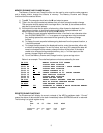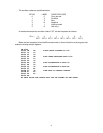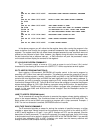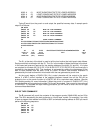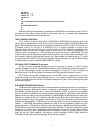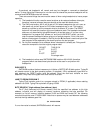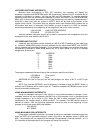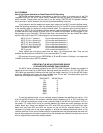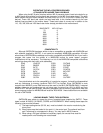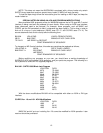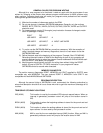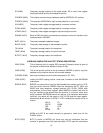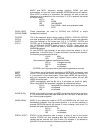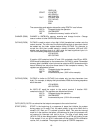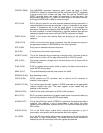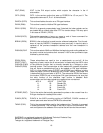13
GENERAL RULES FOR PROGRAM WRITING
Although for a user program to be functional it need only work with the exact system it was
written for, following a few simple rules reduces program modifications for 6800 systems using
other monitors. Following these rules will make your programs more professional and versatile.
Some general guidelines are as follows:
1.) Minimize the number of references made to the ROM.
2.) Do not use strange, in-between SWTBUG® addresses. Generally only the routines
BADDR, BYTE, PDATA1, INHEX, OUT4HS, OUT2HS, CONTRL, INEEE and OUTEEE
should be used.
3.) For large programs, vector I/O through a jump instruction for ease of change to match
other I/O packages. Example:
DON’T DO
JSR INEEE JSR INPUT
à
JSR INEEE
JSR INPUT à INPUT: JMP INEEE
JSR INEEE JSR INPUT
à
4.) Try not to use the SWTBUG® RAM any more than necessary. With the exception of
using it as stack storage and memory diagnostics, there is no real reason to use the
SWTBUG® RAM area.
5.) Define the stack area at the beginning of the program. Example: Start LDS #$ A042.
Relocating the stack location to A042 at the beginning of each of your programs will
prevent you from having to reload the program counter addresses A048 and A049 each
time you RESET and restart your program.
6.) Most programs should have a provision for exiting them without hitting the RESET
button. A jump to CONTRL (7E E0E3) instruction in your program will cause
SWTBUG® control to resume when executed.
MEMORY DIAGNOSTICS
The earlier memory diagnostics ROBIT, MEMCON and CDAT supplied by SWTPC were
compatible only with MIKBUG®. The new versions ROBIT 2, MEMCON 3 and CDAT 2 are
compatible with both MIKBUG® and SWTBUG®.
PROGRAM DESCRIPTION
Although the source listing of SWTBUG® is well commented, the following subroutine by
subroutine description should be of use to those who wish to gain the maximum advantage of its
routines.
TEMPORARY STORAGE LOCATIONS
IRQ (A000) This location is used by the standard IRQ interrupt request feature. When an
interrupt is generated, processor control will jump to the location stored in
IRQ.
BEGA (A002) This location is where the beginning address is stored for the punch and end
of tape routines.
ENDA (A004) This location is where the ending address is stored for the punch and end of
tape routines. It is also used by the byte search routine.
NMI (A006) NMI is used by the non-maskable interrupt (NMI) function. When an NMI is
generated, processor control will jump to the location stored in NMI.



